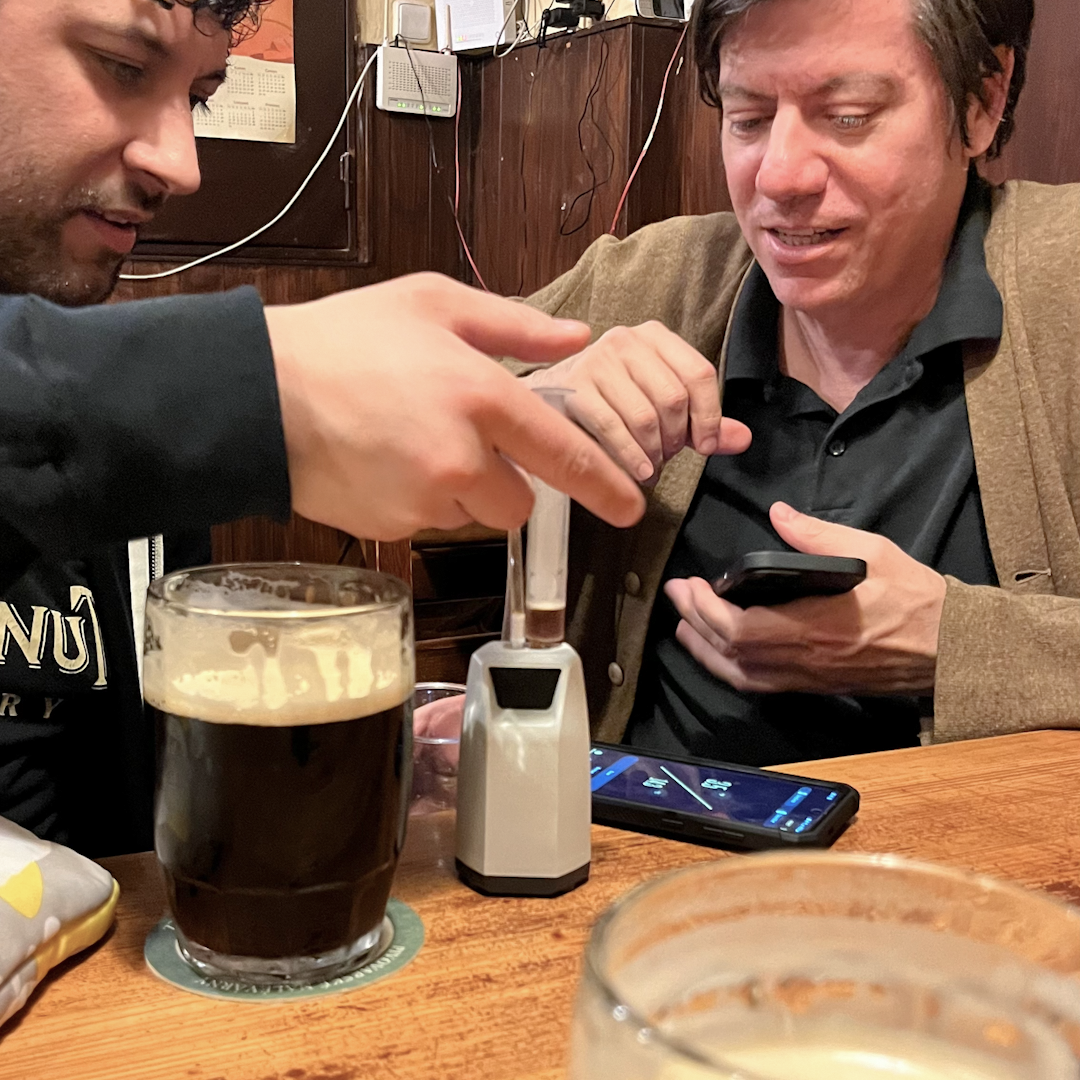
Demonstrating the EasyDens after getting called out sneaking samples while drinking with Evan Rail
I found myself thinking a lot about the perception of sweetness, body, dryness, carbonation, attenuation, and how they all intersect and play off each other during my first trip to Germany in 2018. With the “crispy bois” meme being applied to lager in full swing, it also made me curious about the Final Gravity (FG) in some of the beers I was drinking, as many of them were certainly not “crisp”. I’d often see breweries list some beer specs but sometimes my perception of what I was drinking seemed different from the “official numbers” from websites, books and magazines. Working in breweries and talking to brewers over the years, I know not everyone even takes their FG every time and some even estimate ABV based on yeast attenuation specs given by their supplier. Also with climate change affecting barley gelatinization temperatures, changes in attenuation may be occurring depending on your mash schedule and mash intensity as barley malt gelatinization temperatures are starting to creep above optimum temperatures for β-amylase (~62ºC) in recent years (Some German malt samples sent to TUM for analysis have the new 2023 harvest with GT up to 66ºC).
I bought an Anton Paar EasyDens before a trip to Germany in the spring of 2022 and took a bunch of beer samples, mostly around Munich and Bamberg. It’s only one part of the equation in the balance of a beer (can’t stress this enough) but one of the only easy objective measurements one can take without a lab. I found it interesting enough that I took it with me again in the spring of 2023 and 2024 (so all of these samples are April/May) when I traveled through Germany and the Czech Republic before creating “The Spreadsheet“.
The EasyDens is based on the same oscillating U-Tube technology as the DMA series which starts at 5x the price. It requires the use of a syringe to insert the sample and an app on a smartphone/tablet/smartwatch to take a reading which many dislike but it makes for a very portable and comparatively inexpensive unit. While they advertise a lower accuracy than their more expensive series (±0.3 Plato, ±0.001 Specific Gravity), many have found it to be about as accurate as hydrometer readings (not to mention multiple people reading the same hydrometer differently), including myself, and I’ve seen the device in more and more commercial breweries.
Disclaimer: These are only one snapshot in time and as such may not be reflective of what is “normal”.
I visited many more breweries over the last few years but didn’t sample everything as sometimes the circumstances felt awkward doing so. Maybe I’ll get over that next trip… Also a few samples (like Uerige) were lost when I accidentally tipped over the sample tube and spilled it down the sink. Perhaps an excuse to revisit…
Eventually I’ll format it better with sorting, dates and other information. I might also start expanding it with readings of American beers. Brandon Jones used to post pH readings of commercial beers back in the day which I found interesting. If you’d like to help out, particularly if you find yourself in Europe, send me an email!
Any of these surprise you?
Currently Reading:
Receipt for a book you should preorder
Currently Skimming:
Practical Aspects of Fermentation Management – A Review
Current Rabbit Hole:
Issohadores
Currently Eating:
Jeni’s Sweet Cream Biscuits & Peach Jam Ice Cream
Currently Drinking:
Holy Mountain Holy Water
Currently Listening:
Jozef Van Wissem – The Night Dwells in the Day